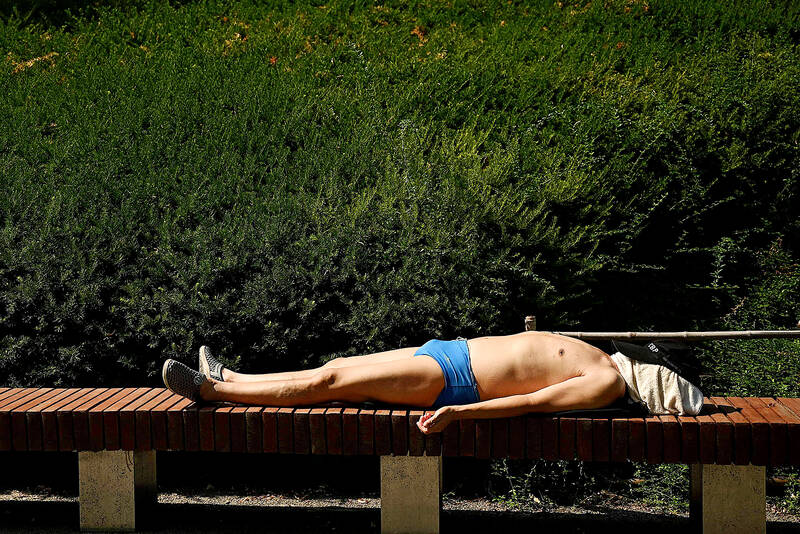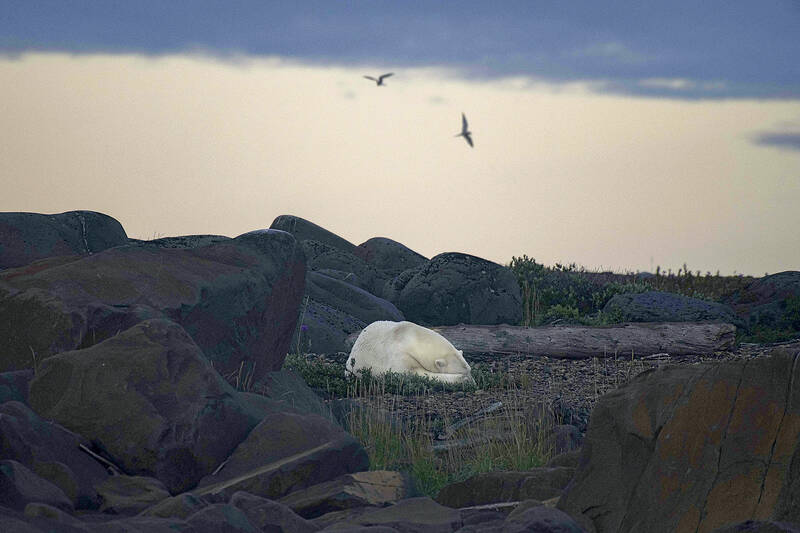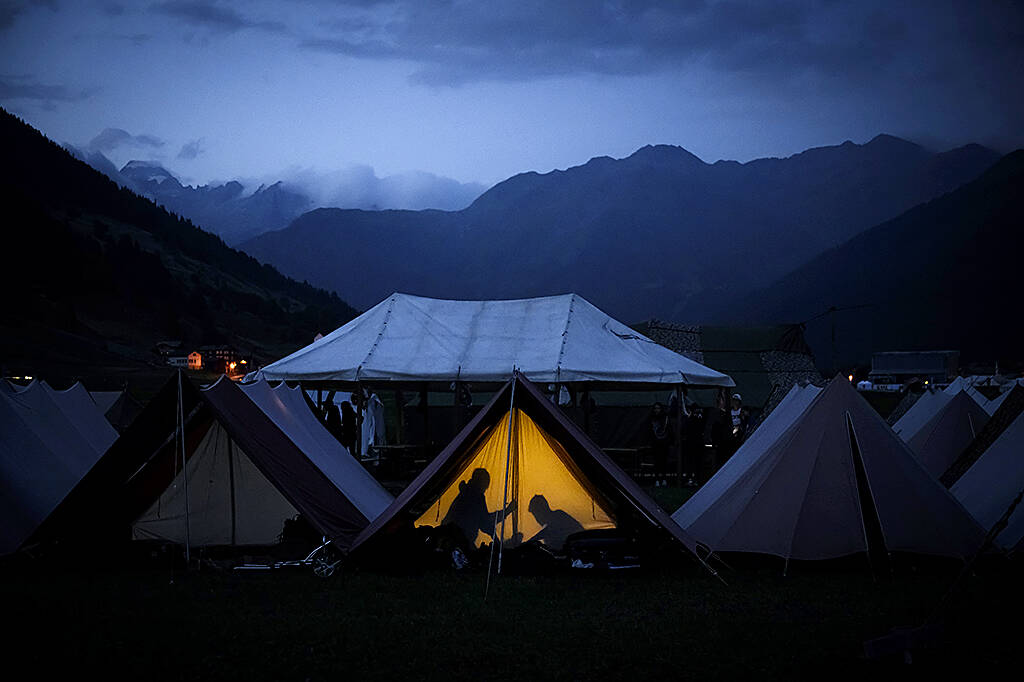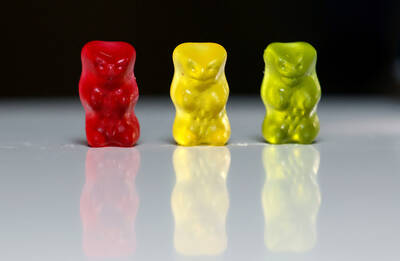It’s 8:30pm on a gloomy evening last month and I’m sitting on the sofa under a tartan blanket and wearing a pair of orange-lensed glasses. My other half regards me with bemusement. A man who disapproves of paracetamol and plasters, Tim has lived through my audio-bathing phase, my steps-tracker phase and the notorious 2015 installation of our bedroom air-quality monitor, a period during which I informed him he should breathe out less carbon dioxide (could he, I asked, just tape his mouth in bed at night so I didn’t wake up groggy with low oxygen levels?).
For all their absence of erotic charm, my latest health gadgets — the light-blocking night glasses and a dome-shaped morning light lamp that turns my face ghostly white — have seen me through five long winters. During these dark months, I’ve risen with a spring in my step and slept as metronomically as a small child — asleep when my head hits the pillow, awake at a regimental 6:32am, with no need for an alarm.
The deep midwinter is traditionally associated with hibernation. For many of us, however, it’s a time for fractured sleep patterns. This is because our circadian rhythms — the unique symphony of body processes that determine everything from wakefulness to mood, ovulation and digestion — are regulated by daily light exposure, particularly the short wave, blue-white morning light that peaks between the hours of 7am and 11am and is in scanter supply in the winter months.

Photo: AFP
My light-blocking night glasses and morning light lamp have seen me through five long winters
Bright light prompts the adrenal glands to produce and release cortisol, the hormone that drives wakefulness. Night-time darkness stimulates the pineal gland to produce its companion hormone melatonin, which promotes sleepiness. As we age, the number of light-sensing cones in our retinas dramatically decreases. By 45, the photoreceptors in the average adult’s eye receive just 50 percent of the light needed to fully stimulate the circadian system. By 55, this dips to 37 percent and by 75 to a mere 17 percent.
GETTING TO SLEEP

Photo: AFP
I discovered circadian hacking in the snowy winter of 2018, during a brutal five-month bout of insomnia, which was provoked, I now know, by low seasonal light levels combined with irregular night-time wakes to feed my newborn son.
During those interminable weeks, when I’d lie desperately awake until dawn — long after my infant child had learned to sleep through the night — I chanced upon a lively online culture of popular sleep science enthusiasts who, on Facebook groups and sub reddits such as r/sleephackers, share experimental interventions to “hack” their body clocks in a spirit of mutually supportive camaraderie.
Recent posts on r/sleephackers, for example, include a user discussing an attempt to reduce his body temperature with palm-cooling gloves (our core temperature dips 1-2 degrees Celsius lower than in daytime as we fall asleep and ideal room temperatures are a prime hacker concern) and a host of light hacks, among them the benefits of opting for candles over electric lighting.

Photo: EPA-EFE
‘CIRCADIAN INFLUENCERS’
“Circadian influencers,” meanwhile, include Ben Greenfield, who lives in the depths of the woods in Washington State and advises “morning light bathing” and “sleeping and waking with the sun” as part of his “light-diet protocol.”
There’s also Stanford neuroscientist Andrew Huberman, whose podcast, Huberman Lab, features episodes on science-supported “sleep optimization toolkits,” enthusiastically reposted by sleep-hacking devotees. Naturally, there are apps, too, like Sleep Cycle, an “intelligent alarm clock” that analyzes sleep patterns to wake users at their lightest sleep phase (in a bid for better waking-energy levels).
For me, circadian hacking arrived at the end of a long line of experiments. Sleeping pills had worked temporarily, but lifestyle interventions, such as evening yoga and lavender pillows, just didn’t cut it for what I came to understand was profound disruption to my circadian clock. Awake all night and ravenous at 4:30am through those exhausting months, I found that every part of me was singing from a different hymn sheet (and most of it was experimental jazz).
Such extreme measures may not work for everyone, of course, and tend to be preferred by souls like me: impatient characters who take a problem-solving approach to life’s inevitable woes. My light regime, which I continue in the winter months for “circadian maintenance,” involves turning on a 1,000-lux light lamp on the darkest mornings and, in the evening, observing “blue-light hygiene,” which means avoiding devices unless they’re on night mode and wearing my Burt Reynolds shades (which block out 99 percent of blue light wavelengths) for watching TV.
UNDERSTANDING LIGHT EXPOSURE
Amy Bender, a clinical sleep scientist who works with athletes to optimize their circadian rhythms, says that light exposure is both central to our health and poorly understood.
“Morning light sets our circadian rhythms for the day and helps us to be alert when we’re supposed to be alert, be sleepy when we’re supposed to be sleepy, and go to sleep and stay asleep,” she says.
We need this light exposure, she adds, “because our inherent circadian cycles don’t run to a 24-hour clock.”
Bender means that if we are sequestered in, say, a dark cave, our sleep cycles typically begin to drift later and later as our body clocks are not internally calibrated to a perfect 24 hours (the average is 24.2). This syndrome, sleep onset drift, can also occur in winter, when we’re exposed to less daylight.
Light’s role in sleep-wake regulation has been studied since the 1980s. However, circadian science — research into the sheer number of bodily processes that run on molecular timers — is relatively new. Thanks to studies conducted in the 2010s, it’s now understood that, rather than our body clocks orchestrating the basics, such as sleep-wake drives and appetite, each of our cells in fact runs on its own molecular timer, calibrated by a central circadian clock in a cluster of cells in our anterior hypothalamus.
For hackers, or indeed any of us keen to improve our sleep or energy levels, the benefits of this breakthrough in circadian comprehension is its DIY potential. If we can figure out the optimal time to eat, wake or exercise, for example, we can change our behavior to minimize harm and improve our health and (if this is our aim) our daily productivity.
Michael Jelly, 27, a British app founder who divides his time between San Francisco and London, became a circadian hacker a few years ago after struggling with daytime sluggishness. Jelly bought a Whoop strap that tracks his overnight heart rate, blood oxygenation, breathing rate, skin temperature and sleep cycles, then coded his own app from the data to analyze what he perceived to be a weekly “accumulated sleep debt.”
Jelly, a fan of Huberman Lab’s podcasts, concluded that sleep initiation was his principle issue.
“I’d go to bed at wildly different times, sometimes very late, and I’d still be unable to sleep until 3am,” he recalls.
He decided to hack his cycle with daily morning outdoor light exposure (even on a cloudy morning we’re exposed to between 5,000 and 10,000 lux of light on an outdoor walk, which is 50 to a 100 times more than that of a typical domestic lightbulb). Jelly also wakes, sleeps and eats at set times each day (circadian-friendly routine setting being another hacker preoccupation) and hopes to wild camp this coming winter.
A 2017 study found that a weekend of winter camping can “entrain” our circadian rhythms to nature’s light-dark cycle, resulting in the earlier winter sleep and wake times of our pre-industrial (or pre-electric lighting) forebears. Today, winter camping is a vogue among hardier circadian hackers. Dark-sky parks in Utah, where campers also get to see the distant galaxy Andromeda in the starry night sky, are a popular spot for a little circadian R&R.
BEST APPROACH?
Leah Irish, a psychologist who studies sleep, doesn’t approve of taking a “hacking” approach to one’s bodily rhythms.
“Choosing to prioritize sleep is a good idea, as it’s essential for optimal health and functioning,” she says. “However, overemphasizing rigidity in daily routines or engaging in practices that ignore natural sleep signals, like going to bed before you feel sleepy, can be counterproductive and actually lead to greater risk for sleep problems.”
Critics of circadian hacking warn, too, of the risks of indulging in “citizen biology” as we “datify” our most intimate processes.
“People can become very obsessed with the data from sleep trackers,” Bender admits, “and the data is not really there yet.”
Wearables, Bender notes, can accurately track when we wake and sleep, but the information on sleep stages, when we fall into deep sleep or more active REM sleep, is not yet reliable.
The term for the pathological quest for the perfect night’s sleep is orthosomnia and that is something I do try to bear in mind. Yet, somehow, it’s worked for me: five years into my circadian-hacking project my sleep, energy levels, digestion and mood are all much improved.
Meanwhile, Jelly feels the data aspect of this approach is what offers reassurance.
“I’d say one in three of my friends track something about themselves: whether that’s putting their moods in a spreadsheet or journaling,” he says. “It’s all about having better self-knowledge, isn’t it?

The canonical shot of an East Asian city is a night skyline studded with towering apartment and office buildings, bright with neon and plastic signage, a landscape of energy and modernity. Another classic image is the same city seen from above, in which identical apartment towers march across the city, spilling out over nearby geography, like stylized soldiers colonizing new territory in a board game. Densely populated dynamic conurbations of money, technological innovation and convenience, it is hard to see the cities of East Asia as what they truly are: necropolises. Why is this? The East Asian development model, with

June 16 to June 22 The following flyer appeared on the streets of Hsinchu on June 12, 1895: “Taipei has already fallen to the Japanese barbarians, who have brought great misery to our land and people. We heard that the Japanese occupiers will tax our gardens, our houses, our bodies, and even our chickens, dogs, cows and pigs. They wear their hair wild, carve their teeth, tattoo their foreheads, wear strange clothes and speak a strange language. How can we be ruled by such people?” Posted by civilian militia leader Wu Tang-hsing (吳湯興), it was a call to arms to retake

Desperate dads meet in car parks to exchange packets; exhausted parents slip it into their kids’ drinks; families wait months for prescriptions buy it “off label.” But is it worth the risk? “The first time I gave him a gummy, I thought, ‘Oh my God, have I killed him?’ He just passed out in front of the TV. That never happens.” Jen remembers giving her son, David, six, melatonin to help him sleep. She got them from a friend, a pediatrician who gave them to her own child. “It was sort of hilarious. She had half a tub of gummies,

The wide-screen spectacle of Formula One gets a gleaming, rip-roaring workout in Joseph Kosinski’s F1, a fine-tuned machine of a movie that, in its most riveting racing scenes, approaches a kind of high-speed splendor. Kosinski, who last endeavored to put moviegoers in the seat of a fighter jet in Top Gun: Maverick, has moved to the open cockpits of Formula One with much the same affection, if not outright need, for speed. A lot of the same team is back. Jerry Bruckheimer produces. Ehren Kruger, a co-writer on Maverick, takes sole credit here. Hans Zimmer, a co-composer previously, supplies the thumping